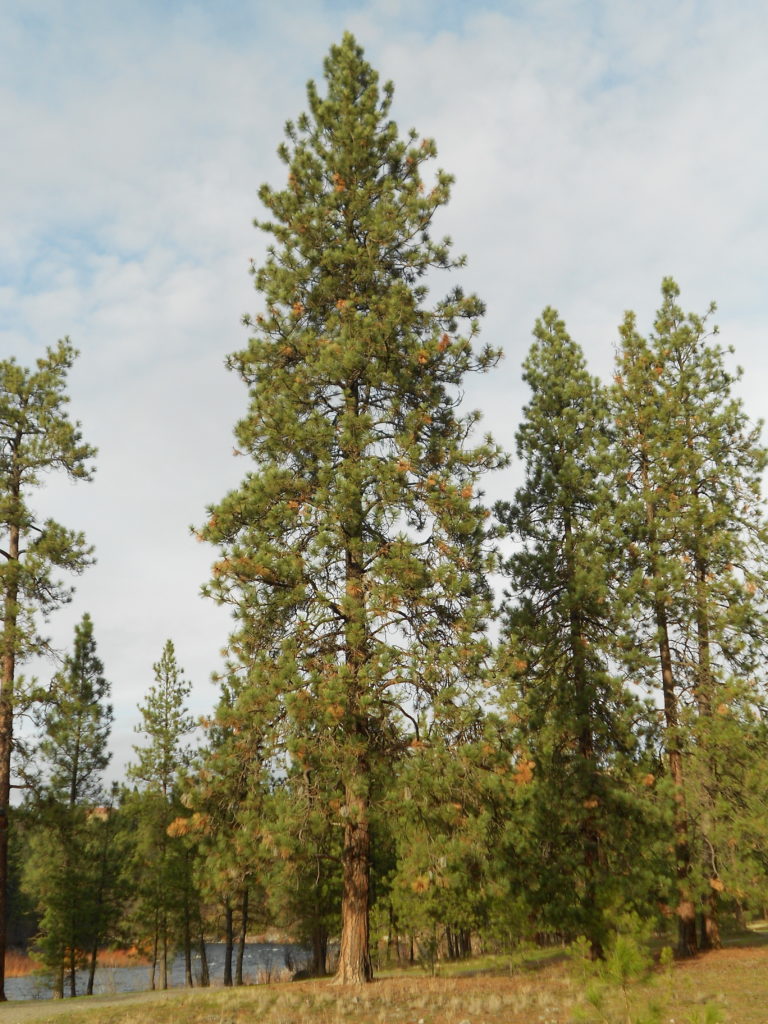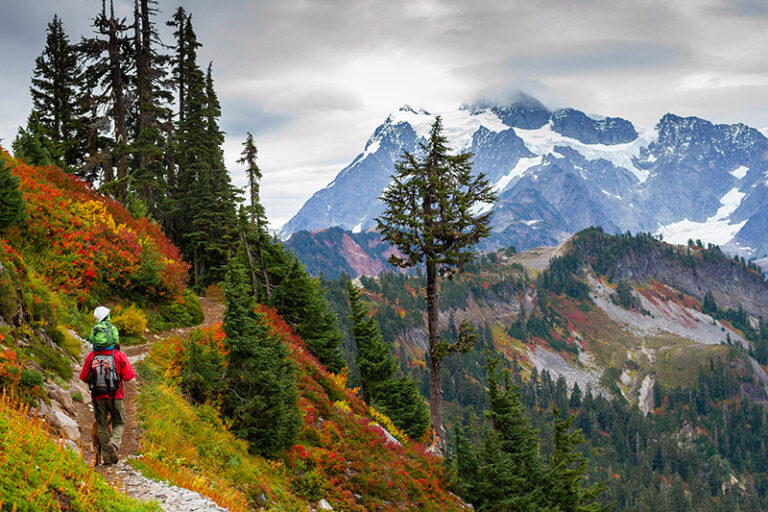So often in my neighborhood or a trail close to town, I stop to look a majestic, thick-trunked ponderosa up and down. Sometimes it’s one tree or a group I’ve admired many times before. I have an enduring affinity for the most common tree in the Inland Northwest.
This attraction once led to a clandestine tree-planting program. Disappointed so few grew in my Garland neighborhood, I roamed the streets with a satchel of seedlings to plant. My tree-planting program took me to undeveloped lots and businesses where I perceived less than full attention was given to landscape maintenance. I put in a few at my local post office, not because the grounds were neglected, but they had columnar basalt, another iconic Eastern Washington feature.
The ponderosa pine was named by Scottish botanist and explorer David Douglas, the same guy who named another common Inland Northwest tree—the Douglas fir. The drought-tolerant ponderosa grows best in dry climates and open spaces. You don’t see many in Western Washington as the wetter climate allows other species to crowd out ponderosas, which can’t thrive in the shade of a thick canopy.
The most widespread pine in North America, ponderosas are found from southern British Columbia to western Texas. They range as far east as central Nebraska. Ponderosas live up to 600 years, with the tallest known living ponderosa laying down its roots in southern Oregon. Measured at 268 feet in January of 2011, if it were a building, it’d be the second highest in Spokane, beat out by the Bank of America building by about twenty feet.

Ponderosas can be identified by their long needles growing in bundles of three. Younger ponderosas with their scaly, gray bark are sometimes called bull pines. Older trees, often called yellow pine and identified by their orange, plate-like bark, have interior wood tinged slightly yellow compared to the white wood of the bull pine.
In our area, most ponderosas grow below 3,000 feet elevation. While hiking in the Kettle Range, I found a scrawny, solitary sapling at 6,500 feet. It’s the highest I’ve come across one in Eastern Washington.
Of all native conifers, ponderosas are one of the most fire-resistant. Historically, mature, open stands were common as frequent low-intensity fires eliminated undergrowth, shaping the ecology of healthy ponderosa forests. However, fire suppression since the West was settled has created denser stands and more fuel. Add in climate change’s hotter, drier summers and even the thick-barked ponderosa is unable to survive 21st century forest fires.
The failure of my tree-planting program didn’t deter me when I moved to a home that lacked our indigenous pine. Planting healthy saplings, including one three feet tall, I dug large holes and gently filled around the roots, making sure not to pack down the soil. Though it was mid-spring, when ponderosas are in their growth spurt, all the trees survived long term.
I used to do more than just look at pinus ponderosa. As a teenager, we had several in our yard, and I liked to climb the tallest one. The first branch was high up, and I had to do a bear-hug shinny to reach it. Neighbors, passers-by, and family members would come into view unaware I was watching them. Who’d think to look for someone at the top of a tree? I often stayed a long time and enjoyed swaying quite a bit from side to side when a breeze came up. Occasionally I worried my weight would cause the top to bend more than normal and snap off. Though it’s been many years since I climbed that tree, I’m going there soon for a family gathering. If I can still make it up, I’ll relive my treetop swaying.
James Johnson is the author of “50 Hikes for Eastern Washington’s Highest Mountains.” He wrote about native plant landscaping for Out There in 2016.













